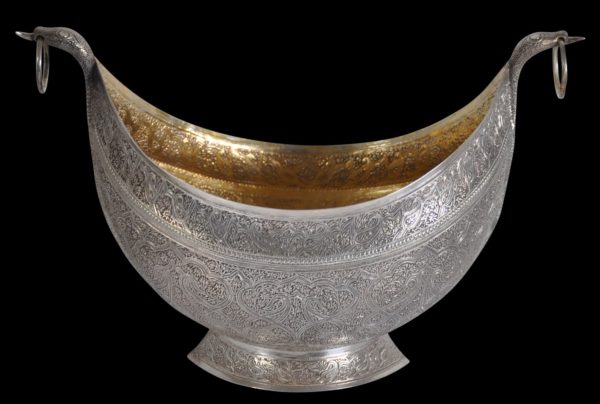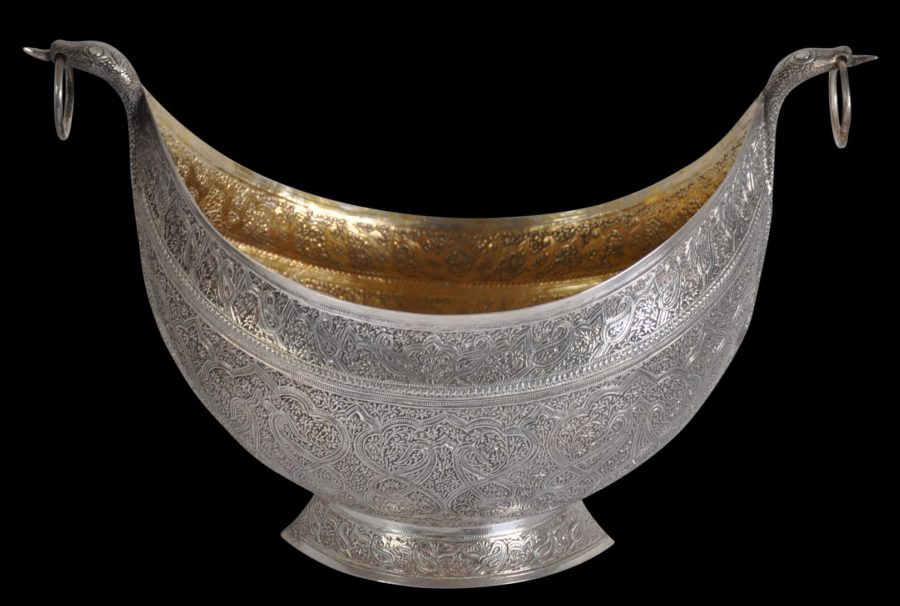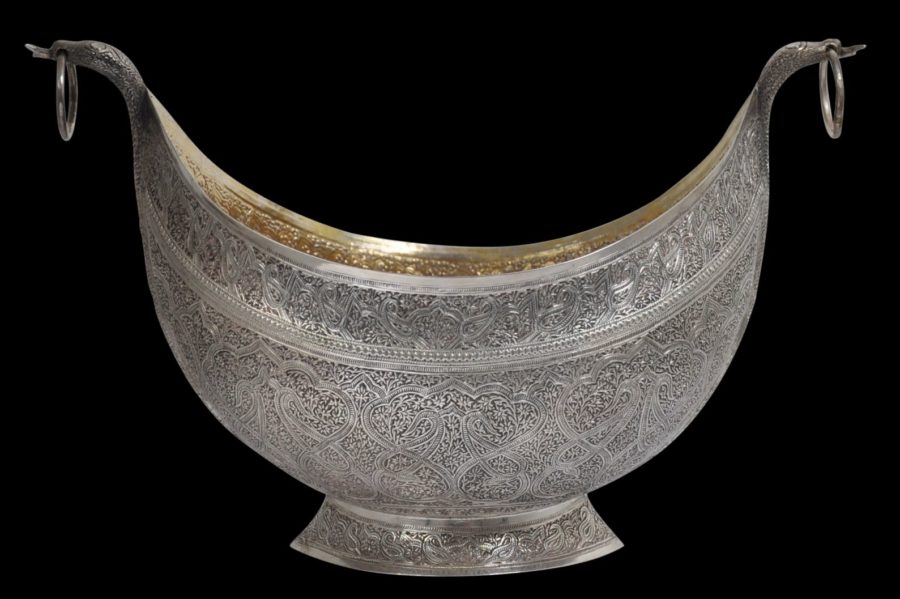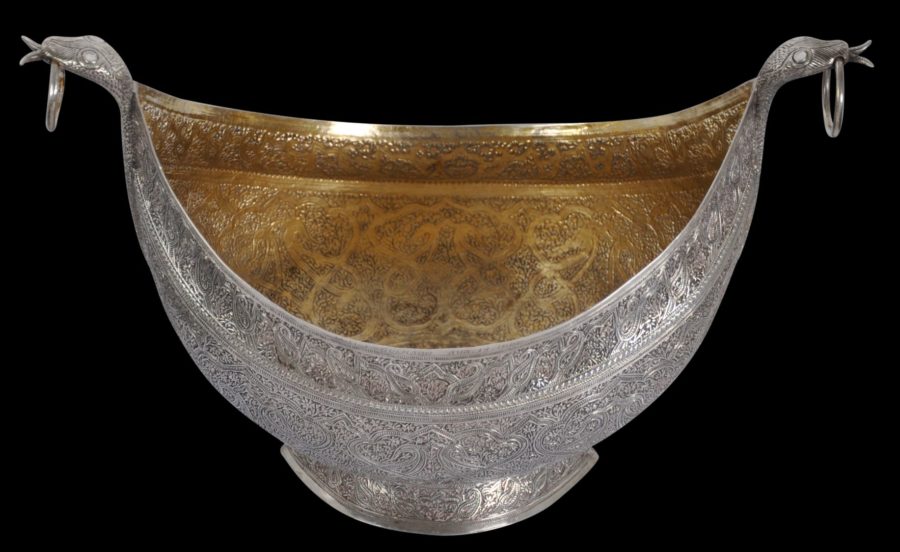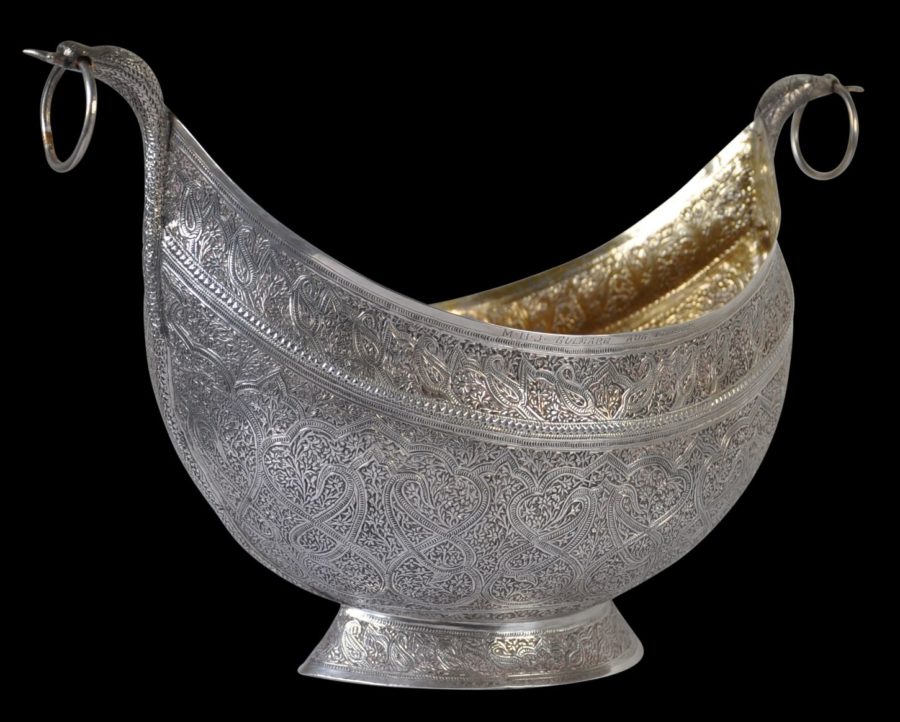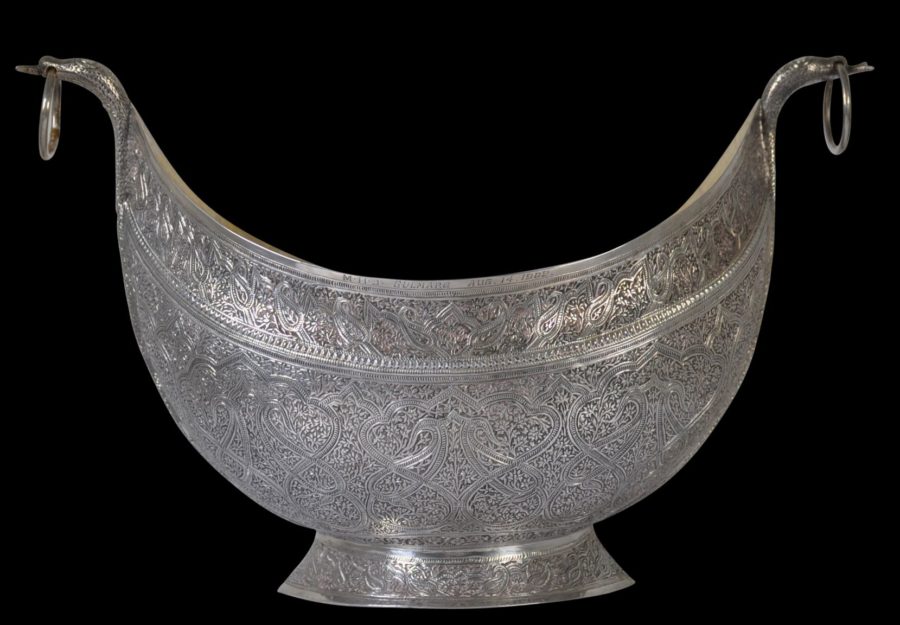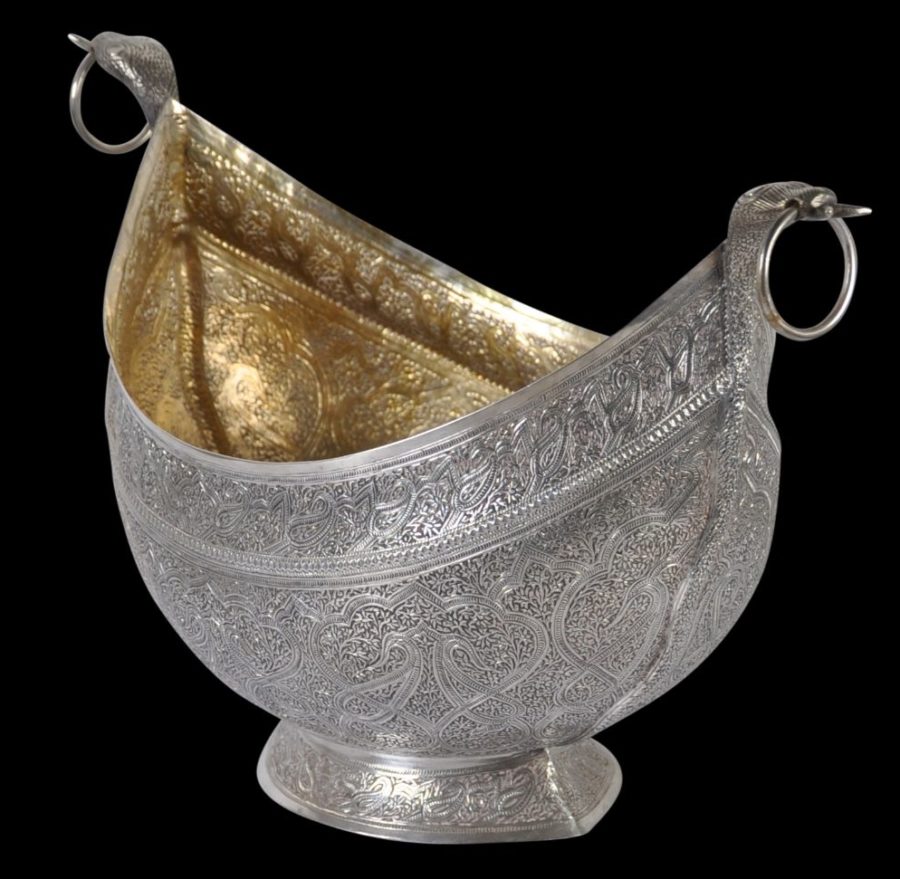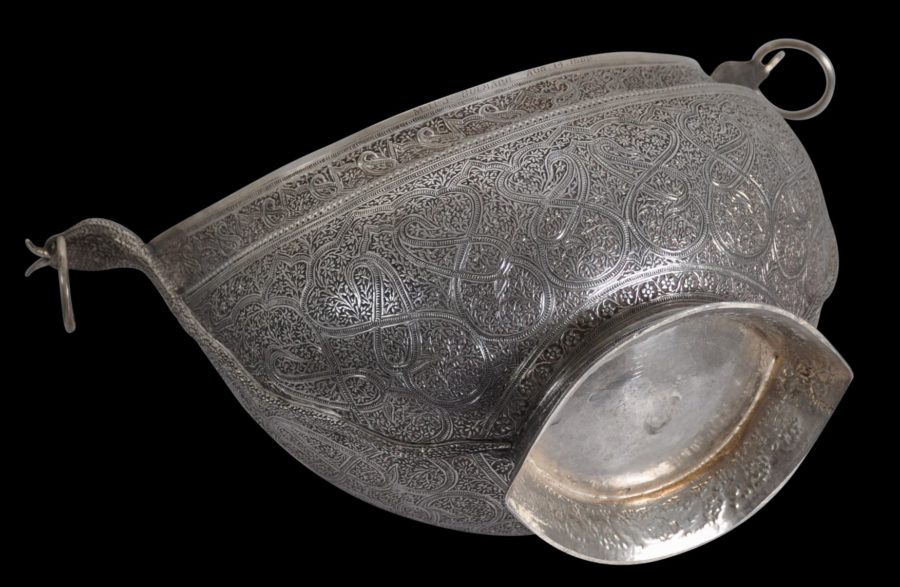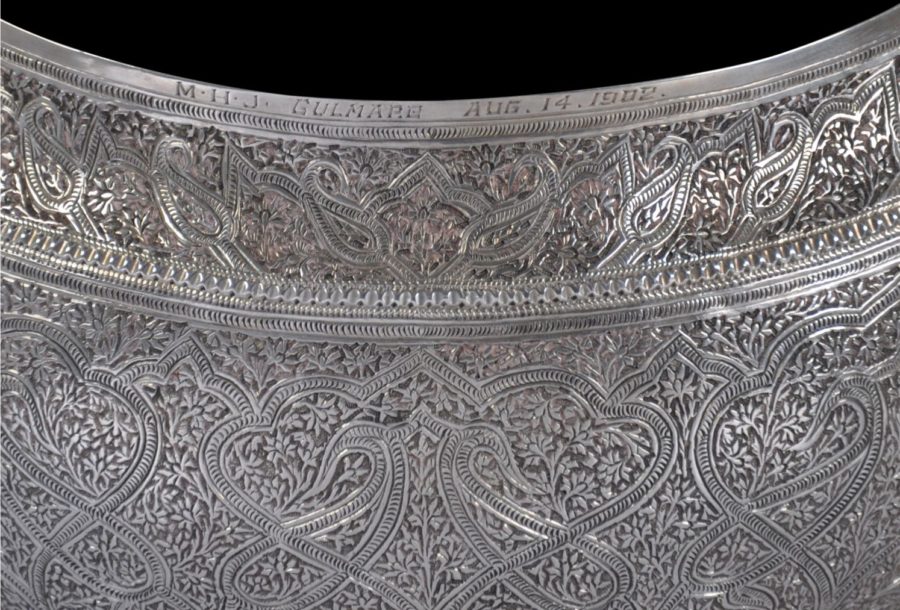This bowl has been made from engraved, silver and is in the form of a boat-shaped kashkul. Kashkuls were used by Islamic sufi mendicants or dervishes as begging bowls to accept alms that were offered to them. Wealthy aristocrats and merchants sought the company of sufis and dervishes and sometimes commissioned kashkuls which were presented to them.
The bowl here has been produced for the colonial market and is based on such a vessel. It has two cobra or naga head finials which are pierced like a kashkul so that the vessel could be hung from a chain. Silver rings hang from each of these ends. The bodies of the snakes trace out the end ribs of the bowl.
The bowl stands on a splayed foot.
It is engraved all over with the Kashmiri shawl pattern, infilled with the local coriander flower pattern.
The plain edging of one side is engraved with the words:
‘M.H.J. Gulmarg August 14. 1902’.
Gulmarg, in Kashmir, is close to the Himalayas, and was often visited by the Mughal emperors and their courts to escape the heat of the summers of the northern Indian plains. The colonial British followed suit and it became a fashionable hill retreat where the British established several golf courses.
The dating on this bowl is useful in suggesting when it was made, but also, the mention of Gulmarg conforms that the bowl was made locally.
Watt (1903, plate no. 8) illustrates a related Kashmiri silver kashkul-shaped bowl that was for sale in the Delhi Exhibition, 1902-1903.
The bowl has a very pleasing, sculptural shape. The engraving work is fine. The interior has been gilded (gold plated), providing a lovely contrast with the silver colour of the exterior.
References
Dehejia, V., Delight in Design: Indian Silver for the Raj, Mapin, 2008.
Watt, G., Indian Art at Delhi 1903, Being the Official Catalogue of the Delhi Exhibition, 1902-1903, Superintendent of Government Printing, India, 1903.
Wilkinson, W.R.T., Indian Silver 1858-1947, 1999.


